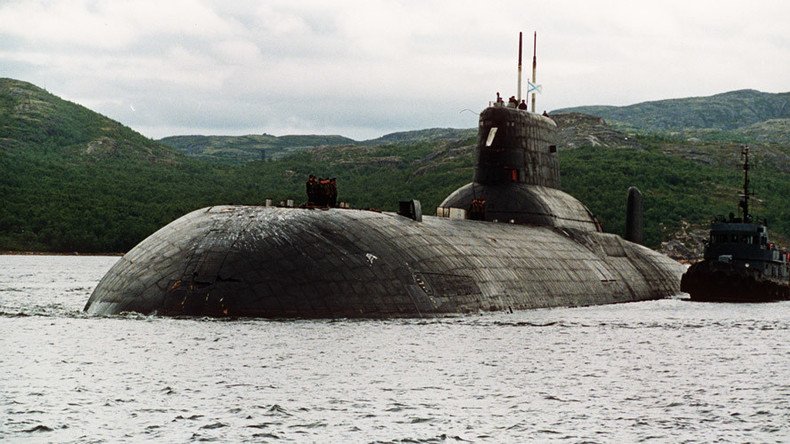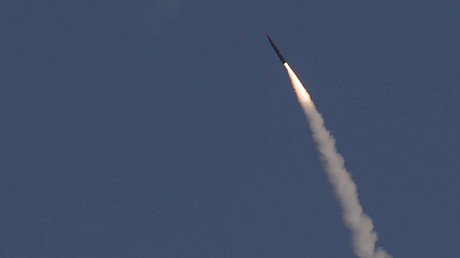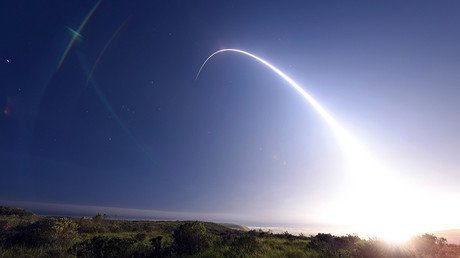Russia to disarm world's largest nuclear ballistic missile submarine

In 2016 Russia is set to disarm the missile system of the Typhoon-class Arkhangelsk submarine, the largest in the world. The disarmament will be carried out in accordance with the New START agreement between Moscow and Washington.
Working in accordance with the New START treaty between Russia and US, the country’s leading Zvezdochka shipyard in the northern Russian city of Severodvinsk will disarm the missile system of the Arkhangelsk submarine, the shipyard’s press service told TASS news agency on Friday.
“We will remove the covers of the submarine’s missile launchers and seal them, thus making it impossible to use the vessel’s missile weapons,” the press service said. “We are not talking yet about dismantling the submarine itself. The tender for this procedure has not yet been announced.”
According to the data published by the Russian nuclear agency Rosatom, the sub’s disarmament is estimated to cost some 28 million rubles (about US$ 400,000).
The nuclear-powered ballistic missile submarine Arkhangelsk TK-17 was designed in 1987 under the Project 941 ‘Shark’ (or ‘Typhoon’ according to NATO classification). The project was aimed to equip the Soviet Navy with nuclear-powered ballistic missile submarines, and resulted in the creation of the largest class of submarines ever built – large enough to accommodate decent living facilities for the crew of 179 when submerged for months on end, and to stock an arsenal of 20 intercontinental ballistic missiles.
Three of the six Typhoon-class submarines built in the 1980s have already been dismantled at the shipyards in Severodvinsk. Of the three that remain, Arkhangelsk and Severstal are set to be dismantled. Dmitri Donskoi just recently underwent a modernization procedure and is now equipped to test the latest sea-based missile system Bulava.
The New START treaty (on Measures for the Further Reduction and Limitation of Strategic Offensive Arms), which was designed to reduce American and Russian nuclear stockpiles, came into force in 2011. It replaced the previous 1991 agreement, introducing lower ceilings for the numbers of warheads and delivery systems deployed.
Commenting on the progress made on the treaty’s fifth anniversary in February, US Secretary of State John Kerry complimented both sides on successful cooperation in the field.
“[New START treaty] continues to be an area of cooperation and continued dialogue between the United States and Russia. I share President Obama's strong belief that our two countries, which ushered in the era of nuclear arms, have a special responsibility to lead the world beyond it,” he said in a statement.
However, the latest moves by the US – such as plans to upgrade 180 B61s strategic bombs stocked in European air bases to a modernized B61-12 version – have raised doubts whether the US adheres to the nuclear arms non-proliferation treaty (NPT).
Opponents of the program have argued that instead of scaling down atomic weapons stockpiles in accordance with the NPT, the overhaul is actually creating more states hosting modern nuclear weapons – a provocation that theoretically weakens Russia’s deterrent.
Moscow keeps the presence of American nuclear weapons in Europe in mind when shaping its own military policies. as reflected in Russia’s newest military doctrine published in 2014, spokesperson for the Foreign Ministry Maria Zakharova told German television last year.
“The comprehensive analysis of the situation points to the threat posed by the increasing military capability of NATO and its endowment with global functions, which it performs in violation of the international law, as well as the encroachment of the military infrastructure of NATO members on the borders of the Russian Federation,” she said.
Step on board a warship & take a submarine dive with Russia' famous Baltic Fleet via @RT_Dochttps://t.co/r683ghNqJupic.twitter.com/22X5snNGrR
— RT Play (@rt_play) March 9, 2016













